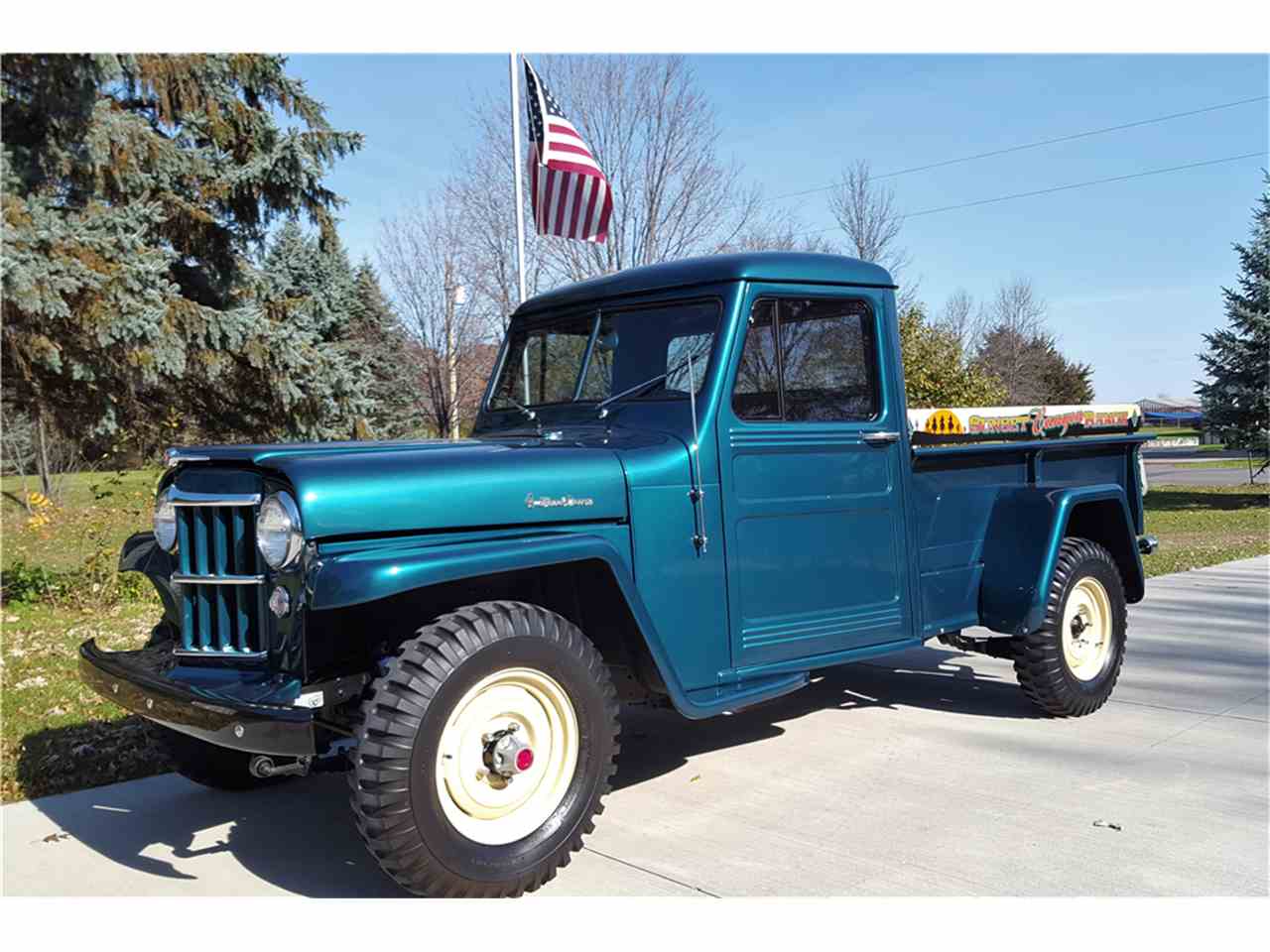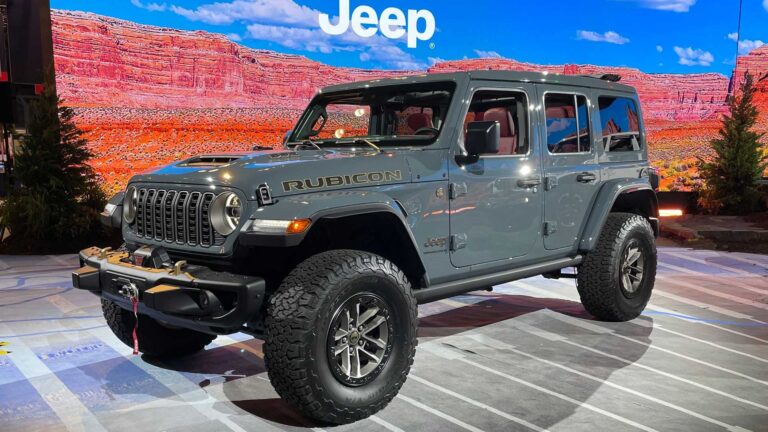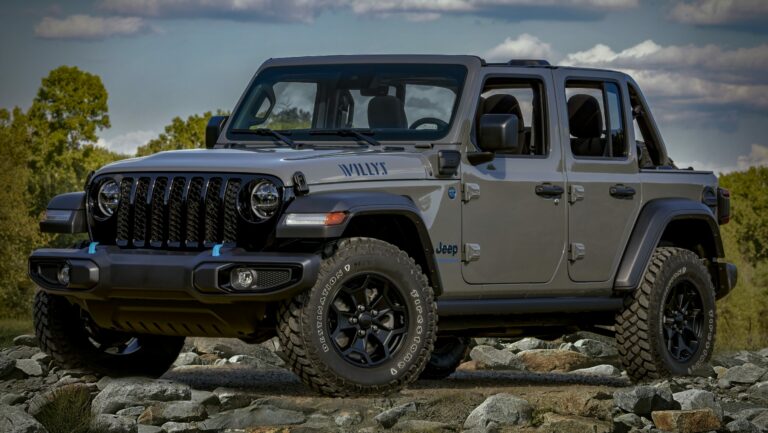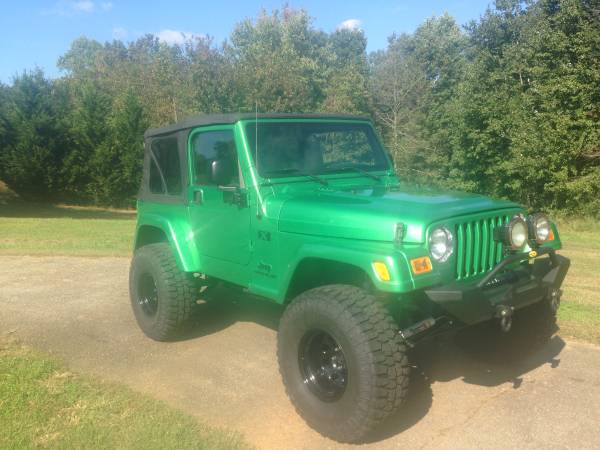1955 Willys Jeep For Sale: Your Comprehensive Buyer’s Guide
1955 Willys Jeep For Sale: Your Comprehensive Buyer’s Guide jeeps.truckstrend.com
The year 1955 holds a special place in the annals of automotive history, particularly for enthusiasts of rugged, go-anywhere vehicles. It marks a pivotal moment for the iconic Willys Jeep, a vehicle that transcended its military origins to become a beloved civilian workhorse and recreational vehicle. When a "1955 Willys Jeep for Sale" appears on the market, it’s more than just an advertisement; it’s an invitation to own a piece of American heritage, a testament to enduring design, and a gateway to a unique driving experience. This article serves as your comprehensive guide to understanding, evaluating, and ultimately acquiring one of these timeless machines.
The Enduring Appeal of the 1955 Willys Jeep
1955 Willys Jeep For Sale: Your Comprehensive Buyer’s Guide
The 1955 Willys Jeep represents a fascinating crossover point in the civilian Jeep lineage. It was a year that saw the continued production of the high-hood CJ-3B and the full introduction of the longer, more refined CJ-5, building on the success of the military M38A1. These vehicles embodied simplicity, durability, and unparalleled off-road capability, making them indispensable for farmers, adventurers, and anyone needing a reliable utility vehicle. Today, their appeal lies not just in nostalgia, but in their mechanical straightforwardness, a vibrant community of owners, and their unmistakable classic aesthetic. Owning a 1955 Willys Jeep is about embracing a lifestyle, a connection to a bygone era of motoring purity.
A Glimpse into the Past: The 1955 Willys Legacy
To truly appreciate a 1955 Willys Jeep, it’s essential to understand its context. The original "Jeep" was born out of wartime necessity, a compact, versatile vehicle designed for military use. Post-WWII, Willys-Overland pivoted to civilian production, giving birth to the CJ (Civilian Jeep) series.
- The CJ-3B (1953-1968): Known for its distinctive "high hood" design, necessitated by the taller "F-head" Hurricane engine, the CJ-3B was a direct evolution of earlier models. In 1955, it remained a popular choice, revered for its compact size and agility.
- The CJ-5 (1955-1983): Launched in 1955, the CJ-5 was based on the military M38A1, featuring a longer wheelbase, a slightly wider stance, and a more comfortable ride than its predecessors. It quickly became the definitive civilian Jeep for decades, establishing the classic Jeep profile many recognize today.
When searching for a 1955 model, you’re primarily looking at either a CJ-3B or an early CJ-5, each offering a distinct flavor of the classic Willys experience.

Why Invest in a 1955 Willys Jeep?
Beyond the sheer joy of ownership, there are several compelling reasons why a 1955 Willys Jeep makes an excellent acquisition:
- Classic Status & Appreciation: These vehicles are bona fide classics. Well-maintained or restored examples tend to hold, and often increase, in value over time, making them a tangible investment.
- Unmatched Character: Unlike modern vehicles, a Willys Jeep boasts a raw, unfiltered driving experience. Its mechanical nature, minimalist interior, and rugged exterior exude character that’s simply not found in contemporary cars.
- Off-Road Prowess: Despite their age, these Jeeps, especially when properly maintained or mildly upgraded, remain incredibly capable off-roaders. Their short wheelbases, light weight, and robust 4×4 systems are ideal for trails and challenging terrain.
- Strong Community & Parts Availability: The Willys Jeep community is vast and passionate. Finding advice, parts, and even specialized mechanics is surprisingly easy, thanks to a dedicated network of enthusiasts and aftermarket suppliers.
- Simplicity of Maintenance: With fewer complex electronics and systems, basic maintenance and repairs are often within the grasp of a home mechanic, reducing long-term ownership costs.

Key Considerations Before Making a Purchase

Acquiring a classic vehicle like a 1955 Willys Jeep requires careful consideration. Here’s what to keep in mind:
1. Define Your Intended Use
Will it be a show vehicle, a weekend trail rig, a farm utility vehicle, or a nostalgic cruiser? Your intended use will dictate the level of restoration or modification you seek and, consequently, the price point.
2. Condition is Paramount
Rust is the biggest enemy of old vehicles. Thoroughly inspect the frame, body tubs, floorboards, and fenders for corrosion. Pay attention to:
- Frame: Look for cracks, bends, or significant rust pitting, especially near suspension mounts and crossmembers.
- Body: Check for rust in common areas like the floor, toolboxes, hat channels (underneath the floor), and rocker panels.
- Drivetrain: Assess the engine for leaks, strange noises, and overall health. Check the transmission, transfer case, and axles for proper function and leaks.
- Electrical System: Original 6-volt systems can be quirky. Check lights, gauges, and wiring for signs of amateur repairs or deterioration. Many have been converted to 12-volt, which is often a desirable upgrade.
- Brakes and Steering: Ensure they are responsive and free of excessive play or grinding.
3. Authenticity vs. Customization
Some buyers prioritize originality, seeking numbers-matching components and period-correct restorations. Others prefer "restomods" with modern engines, power steering, disc brakes, or updated suspension for improved drivability. Both have their merits and affect value differently. Decide what appeals most to you.
4. Paperwork and Title
Ensure the vehicle has a clear, transferable title. Verify the VIN (Vehicle Identification Number) matches the paperwork. A missing or problematic title can turn a great deal into a legal nightmare.
Where to Find Your 1955 Willys Jeep For Sale
Finding the right Willys Jeep requires a bit of detective work:
- Online Marketplaces: Websites like eBay Motors, Craigslist (local searches), Hemmings, and dedicated classic car sales sites are excellent starting points.
- Specialty Dealers & Auctions: Classic car dealers often have vetted inventory, though at a premium. Auctions can offer good deals but require quick decision-making and thorough pre-inspection.
- Willys/Jeep Forums & Clubs: Online forums (e.g., The CJ-3B Page, G503, WillysTech) and local clubs are fantastic resources. Members often sell vehicles directly within the community, sometimes before they hit public listings.
- Word-of-Mouth: Let friends, mechanics, and other enthusiasts know you’re looking. You might uncover a hidden gem.
The Inspection Process: What to Look For
Never buy a classic vehicle without a thorough inspection. If you’re not mechanically inclined, hire a reputable mechanic specializing in vintage vehicles.
- Exterior Walk-Around: Check body panels for ripples, inconsistent gaps, and bondo (use a magnet). Look under the vehicle with a flashlight for frame damage or excessive rust.
- Engine Bay: Look for fluid leaks, frayed wiring, cracked hoses, and general cleanliness. A very clean engine bay might hide issues. Check fluid levels and color.
- Interior: Assess the condition of seats, gauges, steering wheel, and any aftermarket additions. Test all switches and lights.
- Underneath: Get the vehicle on a lift if possible. Inspect the entire drivetrain (engine, transmission, transfer case, differentials) for leaks, worn universal joints, and damaged mounts. Examine leaf springs, shocks, and steering components for wear.
- Test Drive:
- Start the engine cold to listen for unusual noises.
- Check for smooth engagement of clutch (if manual) and transmission shifts.
- Test brakes for pulling or sponginess.
- Listen for differential whine or transfer case grinding in 4WD.
- Note steering play and alignment.
- Drive at various speeds to check for vibrations or rattles.
Valuation and Negotiation Tips
The price of a 1955 Willys Jeep varies wildly based on condition, originality, and location.
- Research Comparable Sales: Look at recently sold similar models to gauge the market.
- Understand Condition Tiers:
- Project: Needs significant work, likely not running or driving. (Lowest price)
- Driver: Runs and drives, but needs cosmetic or minor mechanical work.
- Restored: Fully restored to original or near-original condition, show-ready.
- Custom/Restomod: Heavily modified with modern components.
- Negotiate: Don’t be afraid to make an offer below the asking price, especially if you’ve identified areas requiring repair. Be prepared to walk away if the price isn’t right or the seller is unreasonable.
Potential Challenges and Solutions
Owning a vintage vehicle isn’t without its quirks, but solutions are readily available:
- Parts Availability: While original parts can be scarce, the aftermarket is robust for common wear items and reproduction body panels. Online suppliers and specialized Willys vendors are your friends.
- Maintenance & Repair: Find a mechanic familiar with vintage vehicles or be prepared to learn basic mechanics yourself. The simple design of Willys Jeeps makes them relatively easy to work on.
- Daily Driving: A 1955 Willys Jeep is not a modern car. It lacks power steering, power brakes, air conditioning, and modern safety features. Expect a raw, slower, and noisier ride. Many owners choose to reserve them for weekend adventures or light duty.
- Rust: Ongoing vigilance and rust prevention are crucial, especially if the vehicle will be exposed to harsh weather.
Owning and Maintaining Your Classic Willys
Once you’ve acquired your 1955 Willys Jeep, join a local or online community. These networks provide invaluable support, shared knowledge, and camaraderie. Regular maintenance – oil changes, fluid checks, greasing, and checking for loose bolts – will keep your Willys running smoothly for decades to come. Embrace the quirks, enjoy the attention it draws, and relish the unique connection to automotive history.
Estimated Price Guide for 1955 Willys Jeep
Prices for a 1955 Willys Jeep can vary significantly based on condition, originality, modifications, and location. This table provides a general range.
| Condition Category | Description | Estimated Price Range (USD) | Key Factors Affecting Price |
|---|---|---|---|
| Project | Not running or driving; significant rust, mechanical issues, missing parts. Requires full restoration. | $2,500 – $7,000 | Extent of rust and frame damage, completeness of parts, engine/drivetrain condition (if seized or disassembled), presence of a clear title. |
| Driver | Runs and drives reliably; may have cosmetic flaws, minor mechanical needs (e.g., leaky seals, worn brakes), or light surface rust. Suitable for immediate use with TLC. | $8,000 – $18,000 | Engine and transmission health, functionality of 4×4, brake condition, presence of a working electrical system, overall structural integrity (minimal frame rust), interior condition, tire condition. |
| Restored | Professionally or meticulously restored to near-original or excellent driver condition. Minimal rust, strong mechanicals, good paint and interior. | $19,000 – $35,000+ | Quality of restoration (paint, bodywork, mechanicals), originality of components (numbers matching engine/drivetrain), period-correctness, quality of interior, presence of rare options, reputation of restorer. |
| Show Quality | Concours-level restoration, often exceeding factory new condition. Flawless paint, perfect mechanics, highly detailed, museum-ready. | $35,000 – $60,000+ | Utmost attention to detail, correct finishes, rare accessories, documented history, awards from shows. Highly original and perfect in every aspect. |
Note: These are estimates and market conditions, specific model (CJ-3B vs. CJ-5), and geographical location can influence actual selling prices.
Frequently Asked Questions (FAQ) about 1955 Willys Jeeps
Q1: Is a 1955 Willys Jeep a good daily driver?
A1: Generally, no. While they can be driven daily, they lack modern comforts like power steering, power brakes, AC, and safety features. They are slower, noisier, and require more driver input. Most owners reserve them for recreational use or short trips.
Q2: Are parts hard to find for a 1955 Willys Jeep?
A2: Surprisingly, no. Due to their popularity and simple design, many mechanical parts (engine, transmission, drivetrain components) are still available, either as new reproductions or from vintage parts suppliers. Body panels and specific trim pieces can be harder to source but are often reproduced.
Q3: What’s the difference between a 1955 CJ-3B and a 1955 CJ-5?
A3: The CJ-3B has a distinctive "high hood" to accommodate its taller F-head engine and a shorter wheelbase. The CJ-5, introduced in 1955, has a longer wheelbase, a lower hood line, and a slightly wider stance, based on the military M38A1. Both are excellent vehicles, but the CJ-5 offers a bit more room and a slightly smoother ride.
Q4: Can I modify a 1955 Willys Jeep for better performance or comfort?
A4: Absolutely. Many owners choose to upgrade their Willys Jeeps with modern engines (e.g., GM V6/V8), power steering, disc brakes, and updated suspension systems. These "restomods" can significantly improve drivability and safety for more regular use, though they may reduce originality value.
Q5: What should I look for regarding rust?
A5: Key areas are the frame (especially near spring hangers and crossmembers), the body tub (floorboards, hat channels underneath, toolboxes), fenders, and rocker panels. Extensive frame rust can be a deal-breaker, while minor body rust is more manageable.
Q6: What kind of fuel does a 1955 Willys Jeep use?
A6: Original engines are designed for leaded gasoline, but they run fine on modern unleaded regular gasoline. It’s often recommended to use a lead substitute additive for valve protection, though many owners run without it with no issues.
Conclusion
The pursuit of a "1955 Willys Jeep for Sale" is an exciting journey into the heart of automotive history. These enduring vehicles offer a unique blend of rugged utility, classic charm, and a vibrant community. By approaching the search with a clear understanding of your needs, a diligent inspection process, and realistic expectations, you can find a Willys Jeep that provides years of enjoyment, adventure, and a tangible connection to a simpler, more mechanically-driven era. Whether you seek a pristine showpiece or a capable off-road companion, the 1955 Willys Jeep stands ready to deliver an experience unlike any other.



